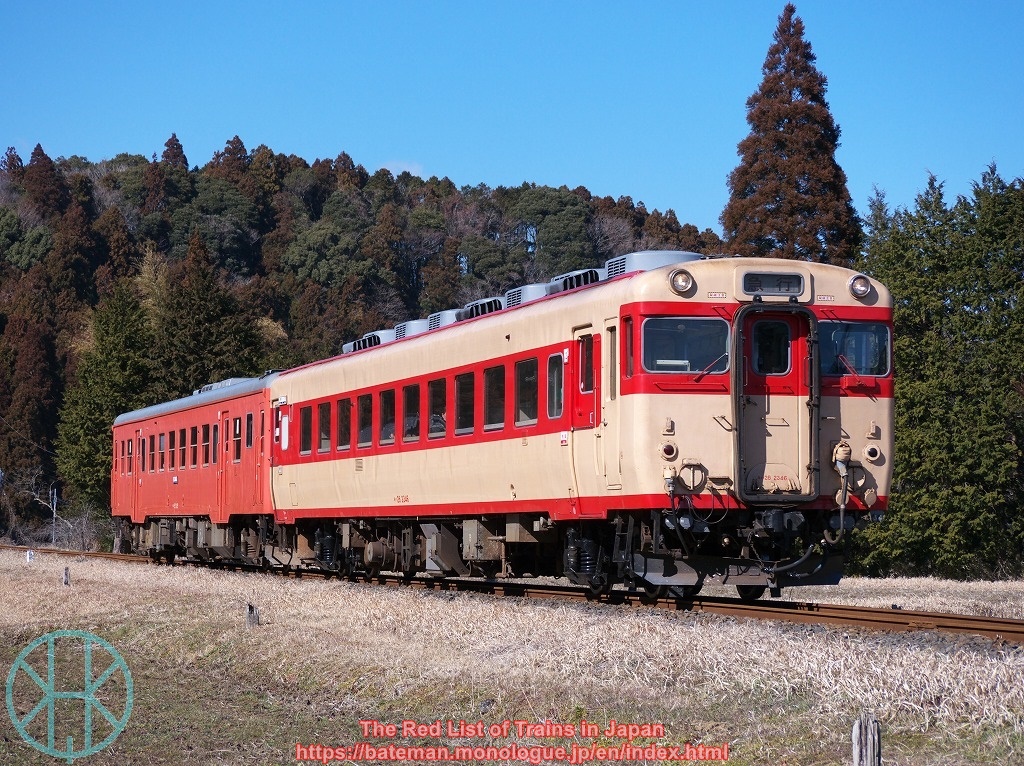JNR KiHa 58 series

Data (as of 29 Jul 2023)
| Status: | Extinct |
| Constructed in: | 1961-69 |
| Number built: | 1,823 |
| Retired in: | 2023 |
History
The KiHa 58 series consisted of several different types of diesel multiple units, such as KiHa 28 and KiHa 58 (as a type). There were also different but similar series such as KiHa 56, KiHa 57 and KiHa 65 series, which are not included in this article.
The KiHa 58 series trains were mass-produced by Japanese National Railways as a part of the Modernisation Programme, replacing steam trains. They were introduced to major and rural lines across the country except Hokkaido, where KiHa 56 series were introduced instead. The KiHa 58 series were designed for express services including to and from Tokyo and Osaka, but they had been used mainly for stopping services on rural lines since the 1980s.
KiHa 28 had one engine per carriage while KiHa 58 had two. When they were air-conditioned, a large generator providing energy to adjacent carriages was installed on the KiHa 28, which was more spacious than the KiHa 58. However, since the power output of KiHa 28 was smaller than that of the KiHa 58, it became a headache for the operator to pursue both enough power and air-conditioned service. This kind of equation was sometimes a difficult mathematical question for those operating the series in mountainous areas, and thus trains on some lines were used without air-conditioning. For example, JR East used non-air-conditioned trains on Yamada Line until 2007.
Of approximately 1,800 carriages, about 1,100 were succeeded to JR East, JR Central, JR West, JR Shikoku and JR Kyushu. Due to its old-fashioned designs, discontinuance of express services (mostly replaced with limited express) and progress of electrification, the series sharply declined after the mid-1990s. In 1989, Kitakinki Tango Railway (now Kyoto Tango Railway, or Tantetsu) purchased four carriages as spare units and renamed them KTR 1000 and 2000 series Rainbow Resort, but all of them were scrapped in 1996. Several more carriages were exported to Russia, Thailand and Myanmar.
All regular services of the KiHa 58 series provided by JR Group ended by 2011, the last one being regional services on Takayama Main Line. A KiHa 28 carriage was transferred to Isumi Railway, where it was operated as a de facto heritage train until 2022.
